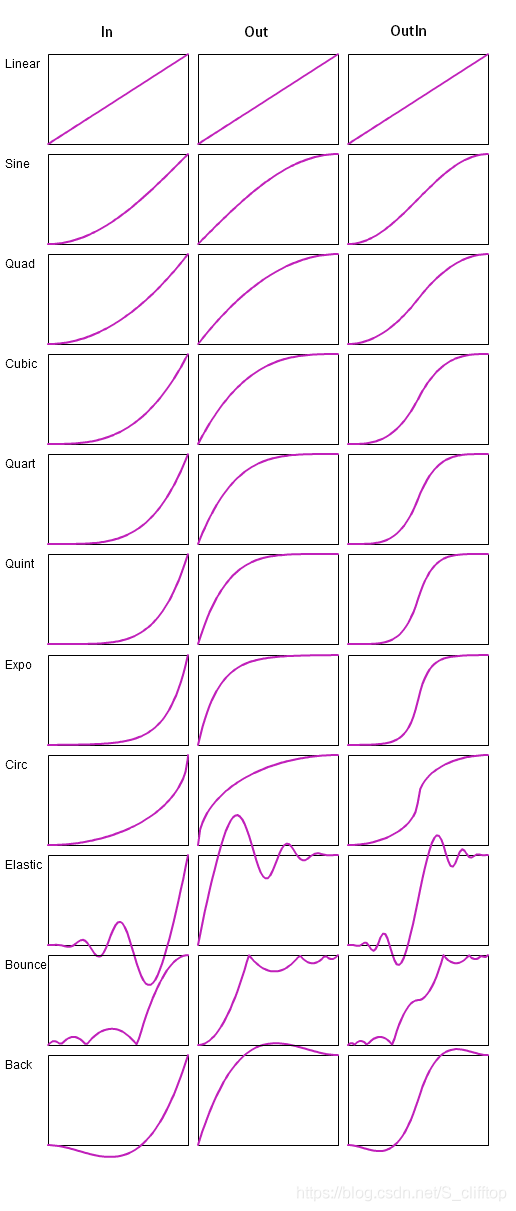详解pyautogui模块
一.安装
pip install pyautogui
或者
pip install -i https://pypi.tuna.tsinghua.edu.cn/simple pyautogui
二.全局设置
s为秒数,不填默认0.1s。表示所有pyautogui相关的指令运行后等待s秒在运行下一条。相当于全局等待
pyautogui.PAUSE=s
防止操作失控,默认就是True,通过FAILSAFE_POINTS来设置坐标,默认(0,0)

也可手动更改
pyautogui.FAILSAFE = True # 防止操作失控,设置鼠标移动某点是抛异常
pyautogui.FAILSAFE_POINTS = [(100, 0)] # 鼠标移动到(100,0)位置时抛出异常
三.获取电脑分辨率
x, y = pyautogui.size() print(x, y)
四.鼠标事件
1.pyautogui.click():单击点击事件
pyautogui.click(x=None, y=None, clicks=1, interval=0.0, button=PRIMARY, duration=0.0, tween=linear) # x,y:为点击的位置坐标,以电脑左上角为原点 # clicks:为点击次数,默认为1 # interval:多次点击间的间隔(比如双击,第一次点击完后,等待设置的秒数在执行下一次点击) # button:设置左击还是右击,默认左击 # duration:设置执行的时间 # tween:鼠标移动到指定位置的规律
button:设置鼠标点击项(left:左击 ,right:右击 ,middle:中击)
除了click()方法可以单击外,pyautogui还提供了专用于左/右/中击的方法。
pyautogui.leftClick() # 左键单击 pyautogui.rightClick() # 单击右键 pyautogui.middleClick() # 中键单击
leftClick()的用法等同于click(button='left')
rightClick()的用法等同于click(button='right')
middleClick()的用法等同于click(button='middle')
2.pyautogui.doubleClick():双击点击事件
pyautogui.doubleClick() # 双击,默认左双击 # x,y:为点击的位置坐标,以电脑左上角为原点 # clicks:为点击次数,默认为1 # interval:两次点击间的间隔(比如双击,第一次点击完后,等待设置的秒数在执行下一次点击) # button:设置左击还是右击,默认左击 # duration:设置执行的时间 # tween:鼠标移动到指定位置的规律
3.pyautogui.tripleClick():三击点击事件
pyautogui.tripleClick() # 单击三次,默认左击
4.鼠标移动
1)pyautogui.moveTo():以坐标为原点移动到指定的坐标上
pyautogui.moveTo(x=None, y=None, duration=0.0, tween=pyautogui.easeInOutElastic) # 鼠标移动到坐标位置,以电脑屏幕左上角为原地定位 # x,y:为移动的位置坐标,以电脑左上角为原点 # button:设置左击还是右击,默认左击 # duration:设置执行的时间 # tween:鼠标移动到指定位置的规律,默认匀速直线运行(linear)
这个介绍下tween参数的值共有哪些。
| easeInQuad | 
|
| easeOutQuad | |
| easeInOutQuad | |
| easeInCubic | |
| easeOutCubic | |
| easeInOutCubic | |
| easeInQuart | |
| easeOutQuart | |
| easeInOutQuart | |
| easeInQuint | |
| easeOutQuint | |
| easeInOutQuint | |
| easeInSine | |
| easeOutSine | |
| easeInOutSine | |
| easeInExpo | |
| easeOutExpo | |
| easeInOutExpo | |
| easeInCirc | |
| easeOutCirc | |
| easeInOutCirc | |
| easeInElastic | |
| easeOutElastic | |
| easeInOutElastic | |
| easeInBack | |
| easeOutBack | |
| easeInOutBack | |
| easeInBounce | |
| easeOutBounce | |
| easeInOutBounce |
左边为属性,右侧为运行的方式(速度+轨迹),图片来源于’https://blog.csdn.net/S_clifftop?type=blog‘如有侵权,请告知删除。
pyautogui.position():可获取当前鼠标坐标
x, y = pyautogui.position() # 获取鼠标当前位置 print(x,y)
2)pyautogui.move():以鼠标当前位置移动x,y个像素
pyautogui.move(x=None, y=None, duration=0.0, tween=pyautogui.easeInQuad) # 在当前位置移动,以当前位置为坐标
该方法与moveTo()的区别在于开始移动的位置不一样,x,y参数是以当前位置相对移动的像素,可正值可负值。
5.按下与松开
pyautogui.mouseDown():按下鼠标
pyautogui.mouseDown(x=None, y=None, button='', duration=0.0) # 按下鼠标,填写坐标的话,就是移动到某个坐标下按下 # x,y为移动到某点按下,不填的话默认当前位置按下 # button按下的点击项,默认左按下 # duration整体指令运行的时间
pyautogui.mouseUp():松开鼠标
pyautogui.mouseUp() # 释放鼠标
我们在做登录验证滑块的时候,就可以用这两个方法+move()去拖拽滑块,并且还不会被检测出来
6.鼠标拖拽
pyautogui.dragRel():在鼠标当前位置点击后相对移动
pyautogui.dragRel(xOffset=20, yOffset=100, duration=3, tween=pyautogui.easeInQuad, button='left') # 在鼠标当前位置点击后相对移动,结束后自动松开 # xOffset,yOffset为移动的距离 # duration整个移动的耗时 # tween移动的速度+轨迹 # button设置点击项,默认左击
pyautogui.drag():该方法与dragRel()用法及效果一致,这里不做多余介绍了
pyautogui.dragTo():从当前位置拖拽到指定坐标轴
pyautogui.dragTo(x=None, y=None, duration=0.0, tween=pyautogui.easeInQuad, button="left") # 鼠标从当前位置拖拽到指定坐标 # x,y为坐标,鼠标移动到指定的坐标(x,y) # duration整个移动的耗时 # tween移动的速度+轨迹 # button设置点击项,默认左击
五.键盘事件
1.按下与松开
pyautogui.keyDown('') :按下某键盘
pyautogui.keyDown('shift') # 按下shift键
pyautogui.keyUp('') :松开某键盘
pyautogui.keyUp('shift') # 松开shift键
常用的键盘表示(自己脑补用法吧)
KEY_NAMES = [ "\t", # tab "\n", # 回车 "\r", " ", "!", '"', "#", "$", "%", "&", "'", "(", ")", "*", "+", ",", "-", ".", "/", "0", "1", "2", "3", "4", "5", "6", "7", "8", "9", ":", ";", "<", "=", ">", "?", "@", "[", "\\", "]", "^", "_", "`", "a", "b", "c", "d", "e", "f", "g", "h", "i", "j", "k", "l", "m", "n", "o", "p", "q", "r", "s", "t", "u", "v", "w", "x", "y", "z", "{", "|", "}", "~", "accept", "add", "alt", "altleft", "altright", "apps", "backspace", "browserback", "browserfavorites", "browserforward", "browserhome", "browserrefresh", "browsersearch", "browserstop", "capslock", "clear", "convert", "ctrl", "ctrlleft", "ctrlright", "decimal", "del", "delete", "divide", "down", "end", "enter", "esc", "escape", "execute", "f1", "f10", "f11", "f12", "f13", "f14", "f15", "f16", "f17", "f18", "f19", "f2", "f20", "f21", "f22", "f23", "f24", "f3", "f4", "f5", "f6", "f7", "f8", "f9", "final", "fn", "hanguel", "hangul", "hanja", "help", "home", "insert", "junja", "kana", "kanji", "launchapp1", "launchapp2", "launchmail", "launchmediaselect", "left", "modechange", "multiply", "nexttrack", "nonconvert", "num0", "num1", "num2", "num3", "num4", "num5", "num6", "num7", "num8", "num9", "numlock", "pagedown", "pageup", "pause", "pgdn", "pgup", "playpause", "prevtrack", "print", "printscreen", "prntscrn", "prtsc", "prtscr", "return", "right", "scrolllock", "select", "separator", "shift", "shiftleft", "shiftright", "sleep", "space", "stop", "subtract", "tab", "up", "volumedown", "volumemute", "volumeup", "win", "winleft", "winright", "yen", "command", "option", "optionleft", "optionright", ]
2.输入内容
pyautogui.press(' '):输入内容
pyautogui.keyDown('shift') # 按下shift键 pyautogui.press("a") # 打印A pyautogui.keyUp('shift') # 松开shift键
3.缓慢输入
pyautogui.typewrite():缓慢输入
pyautogui.typewrite("message", interval=2) # 缓慢输入 # message:为输入的内容 # interval:设置每两个字符输入的时间间隔,单位s
4.多键组合使用
pyautogui.hotkey():多键组合使用(如以下设置全选)
pyautogui.hotkey('ctrl', 'a') # 多键组合使用
六.弹框
pyautogui.alert():alert弹框
a = pyautogui.alert(text='test', title='pyautogui') # alert弹框 # text:弹框内容 # title:弹框标题 print(a) # 打印ok
当弹框运行时程序会暂停往下走,点击取消/确定时才会继续往下执行
pyautogui.confirm():confirm弹框
a = pyautogui.confirm(text='test', title='pyautogui') # alert弹框,点击确定返回ok,点击取消返回cancel # text:弹框内容 # title:弹框标题 print(a)
pyautogui.password():password弹框
pyautogui.prompt():prompt弹框
七.截图
pyautogui.screenshot():截图
img = pyautogui.screenshot() # 默认截取全屏 img.save("./img/gui.png") # 截取后的图片保存位置
如果我们想要截取某坐标的图片,可以添加region元组
region = (1690, 144, 100, 20) # 前两位为x,y坐标,第三位为截取图片的宽,第四位为截取图片的高 img = pyautogui.screenshot(region=region) img.save("./img/gui.png")
pyautogui.locateCenterOnScreen():根据图片获取在当前屏幕匹配的第一个中心坐标
x, y = pyautogui.locateCenterOnScreen("./img/gui.png") print(x,y) # 打印匹配的x,y坐标
若无匹配结果,则返回None,报cannot unpack non-iterable NoneType object异常
除了locateCenterOnScreen(),还有以下用法也可获取匹配图片坐标
a = pyautogui.locateOnScreen("./img/gui.png") # 返回匹配图片的左上角坐标+宽+高 x, y = pyautogui.center(a) # 或者中心坐标位置 print(x, y)
pyautogui.locateAllOnScreen():根据图片获取在当前屏幕匹配的所有坐标及宽高
img = pyautogui.locateAllOnScreen("./img/gui.png") # 返回页面所有可匹配的图片,返回一个生成器(左,顶,宽,高) for i in img: x, y, w, h = i print(x, y)
这里需要注意的是,返回的结果是一个生成器,需for遍历输出
八.页面滚动
pyautogui.scroll():垂直滚动,负数为向下滚动,正数为向上滚动
pyautogui.scroll(-500)
如果想要缓慢滚动,可以加个for循环
for i in range(1, 100): pyautogui.scroll(-i)
pyautogui.hscroll() :水平滚动

这个不做多余介绍了,只有linux系统支持
pyautogui.vscroll() :垂直滚动,负下正上
pyautogui.vscroll(-100) # 垂直滚动,负下正
文章来源:https://www.cnblogs.com/lihongtaoya/ ,请勿转载



